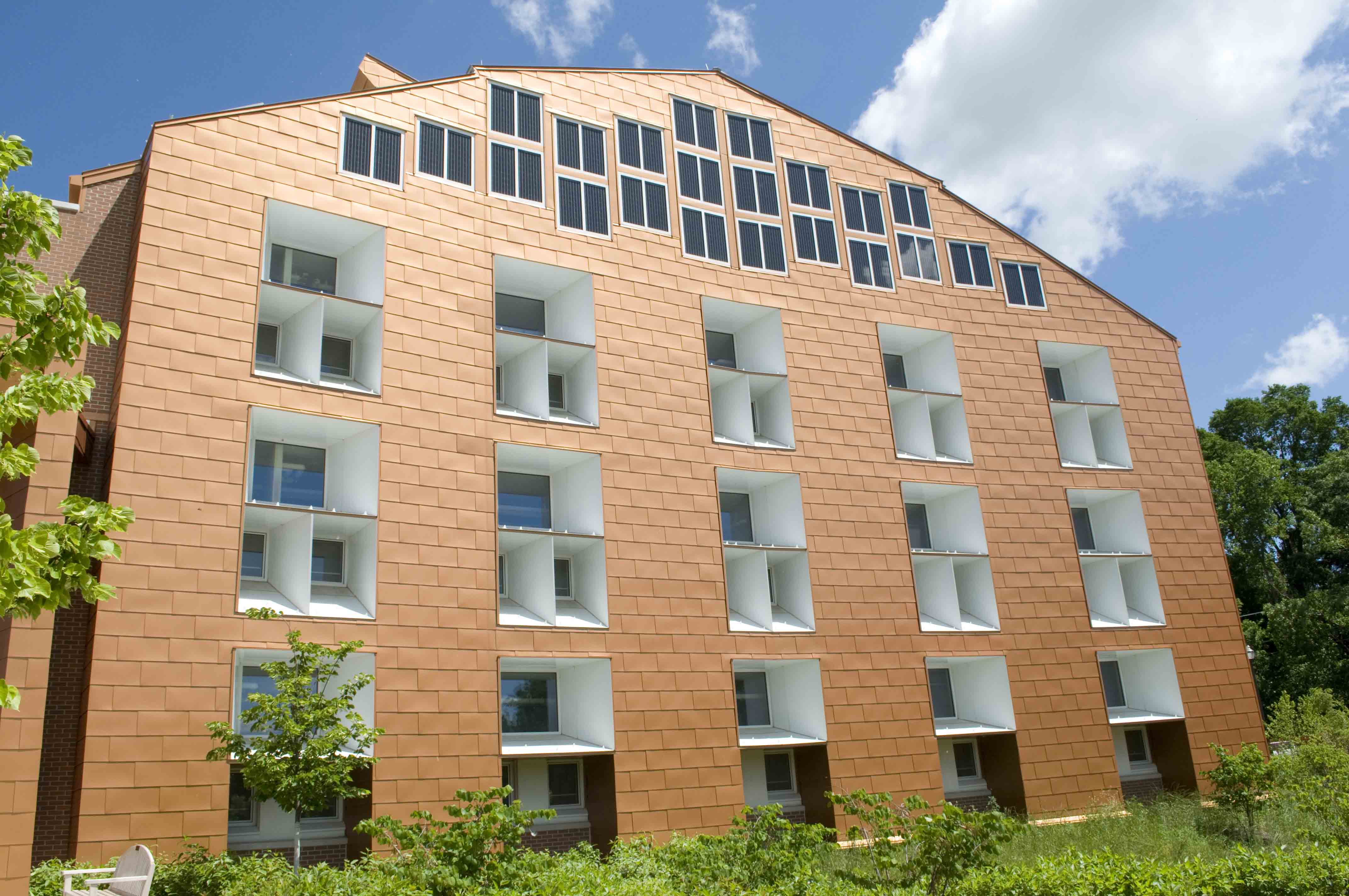Judson University in Elgin, Ill., recently experienced some enviable challenges: continuous growth in its fledging architectural and design program had led to less classroom, meeting and office space, and the university had also outgrown its current library.
School officials came together and concluded that a new facility was needed, with one major priority—the building had to be as sustainable as possible. Judson conducted an outside competition to select the best design to meet its specifications. In doing so, the university was able to solve its unique design challenges and give its architecture students the opportunity to witness a new project from start to finish, right on campus.
Short & Associates of London was selected as the winning architect for its unique metal roof and wall panel design capabilities, its experience in reducing solar consumption and emissions, and its expertise in utilizing natural ventilation systems to increase sustainability. To create the building’s custom-fabricated wall panels and overall exterior design, Short & Associates selected Wiesbrook Sheet Metal (Elgin, Ill.) to collaborate with metal wall panel manufacturer McElroy Metal (Shreveport, La.).
Because using true copper panels for the project would have posed the risk of theft and would have increased project costs, McElroy Metal provided over 104,000 sf of 4’ x 10’ flat metal sheets with Valspar’s signature Fluropon Copper Penny coating for the wall and trim, as well as over 24,700 sf of Medallion-Lok roof panels with Valspar’s Fluropon Ash Gray coating. Valspar’s Fluropon coatings were selected not only for their durability and gloss retention, but for their high solar reflectivity and emissivity. The coatings played a key role in creating a cool metal roof, reducing the building’s energy consumption and heat island effect.
In addition to the cool metal roof, other sustainability features of the new building include exterior walls that sit four feet from the concrete structure to utilize the natural tendency of warm air to rise, creating a vacuum that draws cool air in from the bottom, circulates it and exhausts it through rooftop ventilators.
A basic mechanical heating and cooling system provides essential temperature control during the months when the natural mode isn’t possible. The building also features an integrated photovoltaic system to generate electricity, as well as landscape features that provide storm water control and increased biodiversity.
The completed four-story, 88,000-sf building is divided to serve three functions, with classroom space, academic offices/studios, and the library wing. The building areas are joined together by a bowtie-shaped link that is designed to provide additional classroom space and a gallery.
The project required six months from the mock-up until the actual installation of the Valspar Fluropon-coated wall and roof panels began, and 15 months for completion. The final result was the first truly “green” college building in the United States—achieving a Gold LEED Rating by the U.S. Green Building Council.
For more information on Valspar, visit www.valsparcoilextrusion.com.
Related Stories
| Apr 5, 2011
Top 10 Buildings: Women in Architecture
Making selections of top buildings this week led to a surprising discovery about the representation of women in architecture, writes Tom Mallory, COO and co-founder, OpenBuildings.com. He discovered that finding female-created architecture, when excluding husband/wife teams, is extremely difficult and often the only work he came across was akin to interior design.
| Apr 5, 2011
What do Chengdu, Lagos, and Chicago have in common?
They’re all “world middleweight cities” that are likely to become regional megacities (10 million people) by 2025—along with Dongguan, Guangzhou, Hangzhou, Shenzhen, Tianjin, and Wuhan (China); Kinshasa (Democratic Republic of the Congo); Jakarta (Indonesia); Lahore (Pakistan); and Chennai (India), according to a new report from McKinsey Global Institute: “Urban World: Mapping the economic power of cities”.
| Mar 30, 2011
China's low-carbon future city
In 2005, the Chinese government announced its target to reduce energy consumption per GDP unit by 20% by the year 2010. After a multi-billion investment, that target has been reached. The Chinese Climate Protection Program’s goal to increase energy efficiency, develop renewable energies, and promote energy savings while reducing pollutant emissions and strengthening environmental protection is reflected in the “Future City” by SBA Design.
| Mar 30, 2011
Is the AEC industry at risk of losing its next generation leaders without better mentoring?
After two or three horrifying years for the AEC industry, we are finally seeing the makings of a turnaround. However, data developed by Kermit Baker as part of the AIA Work-on-the-Boards survey program indicates that between 17% and 22% of design firms are eliminating positions for interns and staff with less than six years of experience. This data suggests the industry is at risk of losing a large segment of its next generation of leaders if something isn't done to improve mentoring across the profession.














